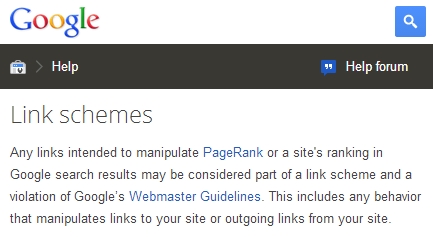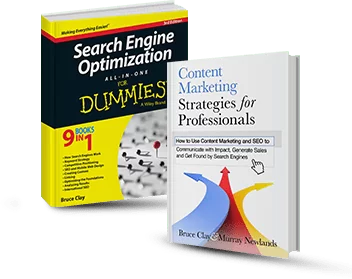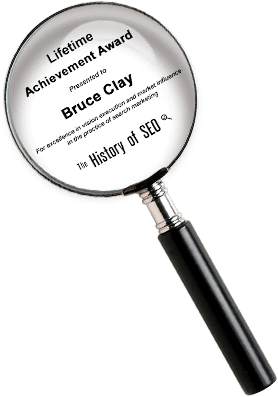Step 13: Link Building – How to Attract Quality Links
Now that you know how to structure your website’s internal linking, it’s time to turn your focus outward. In this SEO tutorial step, you learn how to get those all-important external links to your website (and use two free tools in the process).

Photo by Les Chatfield (CC by 2.0), modified
Links have been the lifeblood of search engine optimization for a long time. Ever since Google cofounder Larry Page invented PageRank back in the late ’90s, links have been a primary way search engines determine rankings. Still today, getting quality inbound links from other websites (aka “backlinks”) is a crucial SEO ingredient — if they are obtained naturally, safely within search engine guidelines.
In this lesson, you’ll get to use two free SEO link tools that will help you identify links, AND you’ll learn:
- Why high-quality backlinks are so valuable
- How to develop a link earning rather than link building strategy
- What kind of backlink to avoid
- How to attract links that increase your site’s link popularity and rankings
What Are Backlinks?
Backlinks are incoming links (excluding ads) that point from another website back to your own. Evaluating a site’s backlinks (or inbound links, or external links) helps search engines determine the site’s popularity, authority, and relative importance on the web.
It’s about Link Popularity
In Google’s PageRank algorithm, each hyperlink to a web page acts like a vote of confidence for that page, similar to a popularity contest. It’s expected that websites will naturally recommend high-quality resources to their readers, and that’s the simple concept behind PageRank (as well as the link measurements used by other search engines). For example, a site about fishing would link to a site where someone can get a fishing license; a site about stamp collecting might link to the U.S. Postal Service; and a marketing blogger might link to this SEO tutorial. Every keyword topic is like its own popularity contest, and the top spots in search engine results pages (SERPs) go to the most-linked-to websites on that topic. Er, not exactly …
Actually, It’s about Authority, Trust and Relevance
Unlike a popularity contest, the PageRank system doesn’t give every backlink an equal vote. In fact, some backlinks can even have a negative impact on your website’s ability to rank. In an effort to stop sites from trying to manipulate PageRank and game the system, search engines analyze links and penalize sites suspected to have unnatural backlink profiles. In the next lesson, you’ll find out more about search engine guidelines and avoiding Google penalties in particular. But for now, suffice it to say there are:
- Good backlinks: These links come from authority websites in your field, experts who write about your topic, or non-spammy sites that have content that relates to your site’s subject.
- Bad backlinks: Links from unrelated websites (for instance, a dog training website linking to an insurance brokerage) don’t do you any good and could look unnatural.
- Ugly backlinks: Links coming from link farms, spam sites, sites known to sell links, or low-quality content (such as pages with lists of random links and no text) can put your site in hot water.

The image to the right is Google’s description of “link schemes,” the kinds of things you want to avoid when thinking about link building. (To be safe, think of it as link earning instead.) “Never buy links” is something Bruce Clay repeats over and over in every SEO Training class.
Definitely ignore those emails that offer you “20,000 links for $29.00” — otherwise, you will rue the day you burned down your own site rankings for (knowingly or unknowingly) getting involved in a link scheme.
Link popularity is not a numbers game anymore. Even more important than the quantity of your backlinks are the quality and relevance of the sites where those links are coming from. If enough relevant, quality sites link to you, then your site becomes a more trusted, authority site by association. So you want the best sites, not the most, linking back to you. Likewise, if you link to quality sites in your field, then your site seems higher quality by association. However, the sites and the destination page must be about the same topic as your linking page for them to remain relevant to each other.
SEO TUTORIAL BONUS
So, is website ranking really all about links?
Is link popularity what search engines really care about the most?
That’s what critics of search engine optimization sometimes claim. Listen to this video by Google’s Matt Cutts to hear the answers.
SEO TUTORIAL BONUS VIDEO #2
In order to get high quality backlinks, you need to have high-quality content.
In this video, Matt Cutts (sporting a moustache and goatee this day) describes why trying to build links to your site without having great content is an uphill battle.
BOTH are needed for SEO to succeed.
How to Get High Quality Backlinks
Links should be a byproduct of having expert content worth linking to — that is our methodology. Links should be earned.
In order to improve your link popularity and earn better SEO rankings among the major search engines, you need to attract links to your website — not beg or barter (or spam) for them. To earn backlinks and stay within search engine webmaster guidelines, here are some SEO best practices for attracting links.
Link Building Strategies That Work

- Make high-quality content: The key to getting quality inbound links is having expert-level, unique content. Your site will accumulate backlinks naturally over time if people find your high-quality content valuable or enlightening enough to share with others. (See Steps 5 and 6 of this tutorial for tips on creating great content that uses keywords.)
- Keep your content fresh: A regular supply of new high-quality articles or other content can get people’s attention and help you compete against sites that may have only static, stale content. In fact, Google instructs its raters to look for content that’s “added and updated over time” as a sign of a quality site. How can you do this? Posting regularly in a blog, building up an articles section for your site, or adding new support pages are all ways to freshen your content, strengthen your brand, and help establish your website as more of a subject matter authority.
- Promote your content in social media: Social media posts that link to your website do not pass link popularity in most cases. (One exception: Google+ posts actually do affect Google’s search rankings because results are personalized.) Nevertheless, social media gives you a way to publicize your content and attract traffic (i.e., visitors) to your site. The buzz and traffic you generate from social media, especially if you take time to interact with people there, builds your audience and can net you some worthwhile backlinks as people write about your content — not to mention earning you fans and customers!
- Link to experts: Within your own website, occasionally include links to reputable sites and subject matter experts in your field. Do this primarily for your users’ benefit, to give them related resources about the subject on that page. Linking to known authorities helps legitimize your website in the search engines’ eyes, too.
- Use traditional PR: Press release links can no longer pass PageRank directly to your website safely, as they once could. (SEO tip: Make sure to put a rel=”nofollow” attribute on links to your site in your paid press releases, so the search engines won’t look at you suspiciously.) However, you can use press releases to seed ideas that you hope a media outlet will pick up. If a journalist writes about your news, that article will likely have a high-quality link pointing to the original source — your website. For this traditional PR technique, news that’s non-promotional and interesting to many people works best.
- Create videos, podcasts, and other shareable objects: What topics could you turn into engaging videos or audio podcasts? Videos attract viewers, whether embedded on your website or uploaded to a video-sharing site such as YouTube. Podcasts available for download can also increase audience interest. Infographics, images, and other multimedia elements you create can become popular, talked-about and shared on the web. Exciting, rich media content helps make people aware of your brand and result in short- and long-term links to your website. (See Step 11 for tips on optimizing multimedia content.)
- Be patient, be awesome: Focus your efforts on creating great content, optimizing it for SEO, and building relationships with your target communities online. Backlinks will follow in time.
How NOT to Get Backlinks
Webmasters should steer clear of these tactics for obtaining backlinks: sending mass email requests; participating in link farms; purchasing links (though paid links identified clearly as ads and nofollowed are fine); getting run-of-site links (where the backlink appears on every page throughout an external site); and having links from irrelevant or disreputable websites. All of these might be seen as “unnatural” or “spam,” and could cause site penalties.
Where Does My Site Stand Now with Backlinks?
To get a feel for how your site currently stands with link building, try out the two SEO link tools below. These are free versions of tools from our full SEOToolSet®, and you can use them to compare your web pages with your competitors’ pages, too.
First, here’s how to use the Link Analysis Report:
- Enter any URL (i.e., a specific web page address, such as http://www.domain.com/page.htm) and click Link Report.
- Looking at the report, find out who’s currently linking to a page on your site.
- Enter a competitor’s ranking web page to discover links that may be helping boost that site in the SERPs. (SEO Tip: A site that’s relevant for your competitor may also be relevant for your web page, so that may be a relationship worth starting.)
SEO Tool – Link Analysis Report
| Page URL | |||
|---|---|---|---|
Secondly, here’s how to use the Pages Indexed and Inbound Links Report:
- Enter any URL and click Status Report.
- See how many pages search engines have indexed for your site domain. (Note: If the number seems too low, make sure your pages all show up in your XML Sitemap, as explained in Step 9, and refer to Step 8 for how to submit your site to search engines.)
- The inbound links report also shows the number of backlinks pointing to the specific page URL you entered.
SEO Tool – Pages Indexed and Inbound Links Report
| Search Engine | Pages Indexed | Inbound Links |
|---|---|---|
Next up in the SEO tutorial, we go deeper into how to avoid Google penalties, particularly Penguin. You’ll learn how to monitor backlinks to spot any “ugly links” that may be threatening your site AND how to get rid of them.
Need more SEO tips?
If someone has done damage to your site’s SEO with low-quality link building in the past, talk to us about our Penalty Assessment & Recovery Services. For beneficial link-earning tips, check out our book Content Marketing Strategies for Professionals.
Related blog posts and articles:
35 White Hat Link Earning Ideas
Backlink Analysis: How to Judge Good Links from Bad
19 Fresh Thoughts on Link Building and Disavow Shared by Top SEO Minds
Penguin-proof Link Building Tactics
Interview Series: Roger Montti on Post-Penguin Link Building



